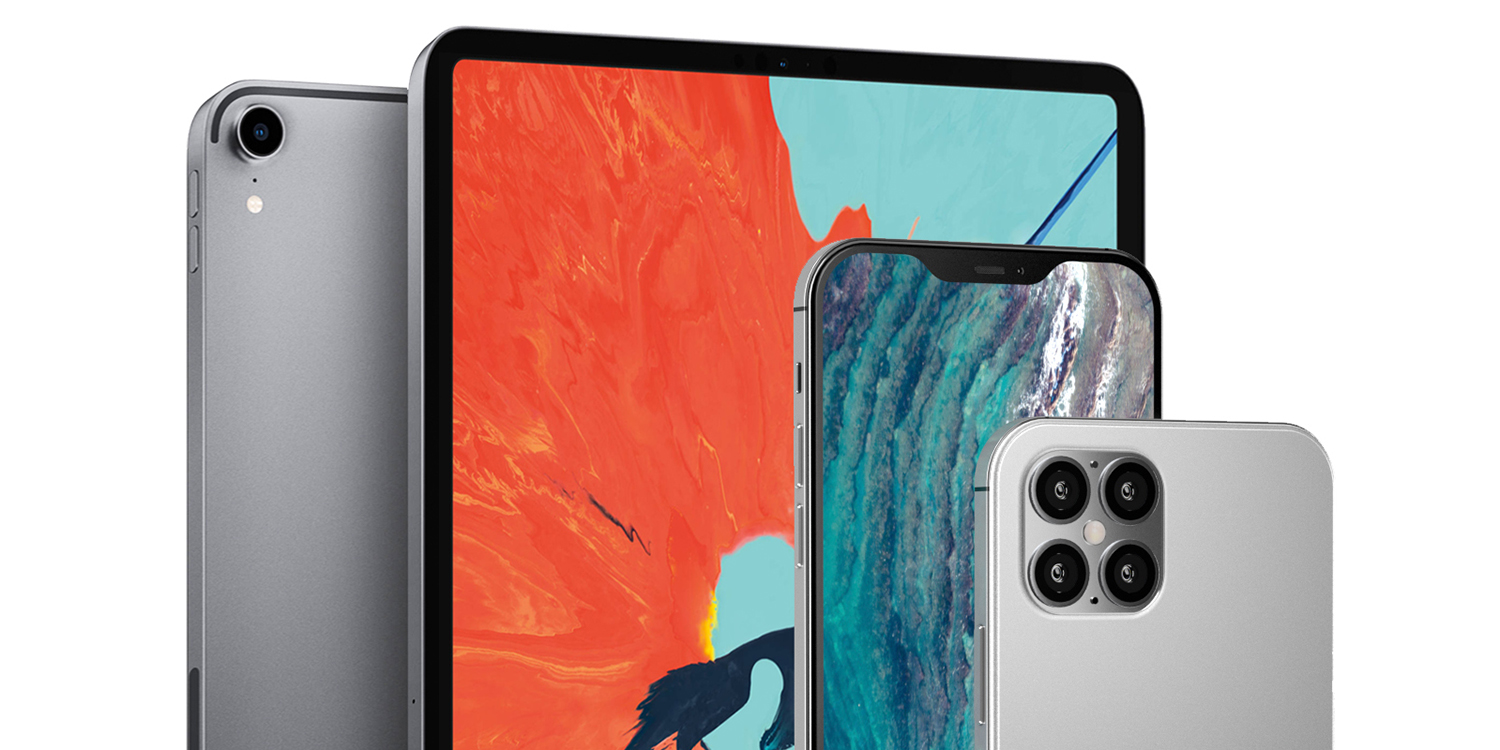
We’ve already seen one set of iPhone 12 renders, though we noted at the time that the notch-free design shown isn’t feasible for next year’s models.
Today, though, new iPhone 12 concept images give us a more realistic idea of how next year’s flagship iPhone design might look, based on reports from noted Apple supply-chain analyst Ming-Chi Kuo …

created the renders, which reflect Kuo’s expectation of a slab-sided design reminiscent of the iPhone 4/5/SE. Apple has of course already adopted this design aesthetic in the current iPad Pro models.
Apple is rumored to be moving away from the softer contours of present models in favor of a sharper, boxier aesthetic that channels the design sensibilities of the iPhone 4 and 5 […]
Based on the rumors that the next iPhone models may channel this boxier aesthetic, we’ve created some concept renders to illustrate this shift in product design. And we’ve got to say […] this design looks really cool.

While a completely notchless, bezel-free iPhone was the long-term goal of Apple’s former design chief Jony Ive, that vision is still some way off yet. There have been suggestions that the notch may shrink next year, however, and that’s what we see here.
Another Kuo report back in the summer suggested that the iPhone 12 would have rear time-of-flight (ToF) sensors, designed to improve Portrait Mode and to offer better support for augmented reality (AR) features.
A time-of-flight VCSEL is similar to the infrared TrueDepth camera system found in iPhones today on the front of the device, which enables Face ID. Adding such a 3D-sensing system to the back camera would enable higher-fidelity 3D photo captures, potentially opening up new augmented reality opportunities.
The renders imagine these taking the visual appearance of a fourth camera lens, just for a more harmonious look.
In short, a Time-of-Flight (or ToF) camera can measure depth much more accurately than a regular one, so it can be a perfect choice for augmented reality uses. A ToF camera uses infrared light to map the immediate surroundings. It works in conjunction with an IR sensor that emits a light signal, which then bounces off of the subject and returns to the sensor. The phone then calculates the time it took the signal to bounce back into the sensor, thus creating a more accurate depth map of the scene than a regular camera could.If Apple puts a ToF camera on the iPhone 12, we can’t be sure that it would have its dedicated bump like the other three lenses—as it will likely be smaller—but for the sake of symmetry we went with the quad-camera design you see above.
Check out the rest of the iPhone 12 renders over at
I’ve always been a fan of the classic iPhone 4 look, preferring it to the later rounded edge models – what about you? Let us know what you think in the comments.
Related:
- iPhone 12 Pro concept imagines iPhone SE design with ProMotion display, four cameras, more
- Kuo: Next year’s iPhone to look similar to the iPhone 4 as part of significant chassis redesign
- Kuo: Key 2020 iPhone upgrades will be all-new design, 5G, and improved cameras
- 5G iPhone in 2020 enables Apple to wait for next-gen tech, with two benefits
- Kuo: New iPad Pro and iPhone SE 2 in early 2020, followed by Apple AR headset collaboration with ‘third-party brands’
- Kuo: Apple to release ‘iPhone SE 2’ in Q1 2020 with iPhone 8 design, A13 processor
Check out 9to5Mac on YouTube for more Apple news:
Author: Ben Lovejoy
Source: 9TO5Mac



